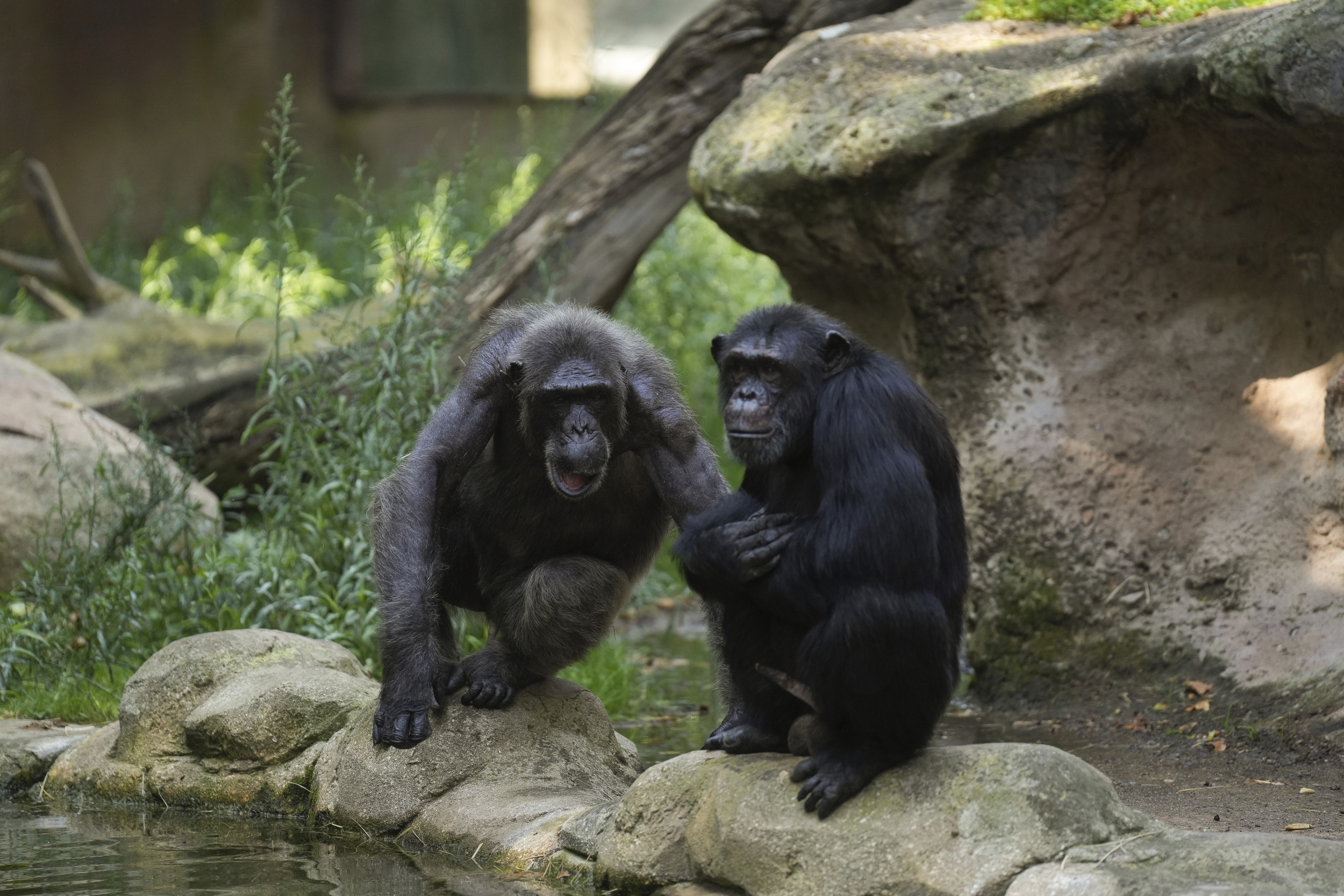
Human’s closest living relatives, Chimpanzees, primarily learn their communicative patterns from their mothers and maternal relatives, according to a new study.
Newsweek has reached out to the study’s lead author for comment via email on Saturday.
Why It Matters
Humans and chimpanzees share an overwhelming majority of their DNA, a similarity that makes chimpanzees important for studying human biology, evolution, and behavior.
The study finds that key aspects of chimpanzees’ communication are shaped by social learning and interactions rather than strictly genetics, emphasizing the power of maternal influence. Since humans also learn communication behaviors from those they interact with most, the study’s findings suggest this trait may date back to the common ancestor of both species nearly 8 million years ago.
What To Know
A study published this month in the PLOS Biology journal, found that young chimps mainly learn various vocal and visual patterns of communication from their mothers and maternal relatives.
Over months, researchers observed around 60 chimps in Kibale National Park in Uganda. Chimpanzee mothers are the primary caregivers for their young until about age 10, providing what researchers describe as a “social template.”
The study found “variation in the number of vocal–visual combinations produced per communicative event in chimpanzees is predicted by maternal kinship, with individuals from the same matriline producing similar numbers of vocal–visual combinations to each other,” noting that their patterns were not explained by their fathers or any paternal family members.
A study last November found that chimp’s social behavior is “contagious,” meaning they are likely to mimic behavior of those around them. Studies often show how closely linked chimps and humans are, with a May study reporting on wild chimps self-medicating their wounds with plants as well as providing medical aid to other chimps in need.
Europa Press via AP
What People Are Saying
Joseph Mine, lead researcher and a biologist at the University of Rennes in France, told NPR: “This fact that we acquire parts of our communication socially seems to be potentially a very ancient trait — a feature of our lineage for several million years.”
Cat Hobaiter, a primatologist at the University of St. Andrews in Scotland, told NPR: “We’re seeing such similarities across the ape species. My bet is that we would see something similar in gorillas and orangutans. Then we’re talking about something that might be 16, 17 million years old — so long before humans were human, apes were learning socially from each other.”
